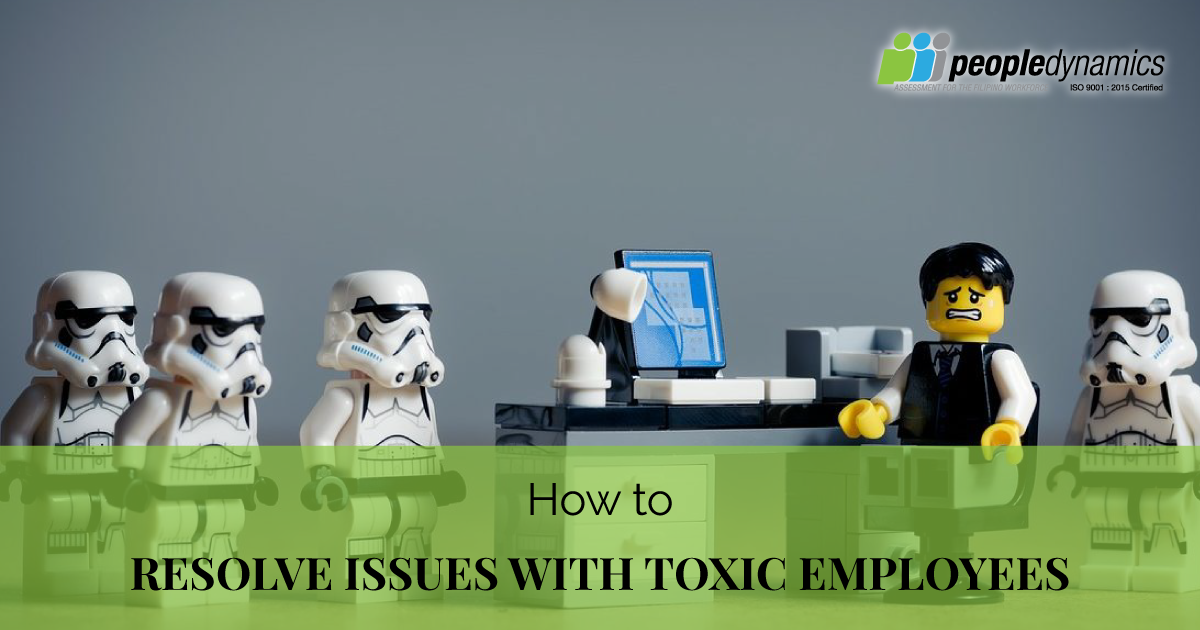A healthy work environment and quality of work results are tightly correlated. If your employees are happy and satisfied, they will be more motivated to reach the set goals and even exceed them.
And then we have toxic employees.
Toxic employees are the individuals that harm both their colleagues and the enterprise with their behavior. Such people disorient others, compromise the company rules, and hurt the overall productivity.
At the same time, it can be incredibly hard to fire such people. They may not even do anything illegal but, at the same time, they remain an obvious destructive element.
So what do you do to resolve the damage done and prevent such employees from affecting others?
Identifying the toxic employee
Before taking any action, it is important to identify a toxic employee and differentiate them from a difficult one.
As said above, a toxic employee is the one that harms both the company and colleagues. There are a few common types of toxic employees:
- The “social butterfly” person who spends most of their time gossiping and taking rather than doing actual work. These people are a great distraction for others and may seriously affect project deadlines and quality of work.
- A person who is always negative or annoyed and passes this behavior on others, causing negativity in return.
- The over-confident person who thinks they are irreplaceable. Such people may ignore their work and annoy others by their attitude.
- The person who neglects their duties, ignores the working schedule, and overall, behaves in a manner that screams indifference towards work and people around.
You can also identify the toxic employee by listening to other people. Maybe you’ve heard various team members complaining about a certain person way too often – that would be a sure sign to pay attention to this employee.
It is important, however, not to ask the team members directly about the toxic employees. Instead, listen to what they are saying and then approach the person individually.
Find the source of the problem
Before driving someone into a corner, first, try learning what the actual source of a problem is.
It may happen that the person is going through a hard period in life, like a divorce or an illness. In this case, try offering help or suggest taking a few days off to recover the situation without impacting work and others.
However, do not go with a question like “Hey, why are you behaving like that?” straight into one’s face. Instead, just sit them down and calmly ask how things are going. An experienced HR specialist will always be able to see whether the person is anxious or nervous and will then gradually lead the person to answer the question about the source of the problem.
In case nothing happened in their lives and it’s just their behavior, let’s see the next steps.
Explain the problem
One of the biggest features of most toxic employees is that they simply do not notice their behavior or tend to ignore it.
Once you are sure that the person is a toxic employee, give them a direct explanation of how their behavior affects the work process. It is important to be extremely clear and give definite justifications: instead of saying “you are annoying,” describe the exact damage that their behavior causes.
The positive scenario is that the person will listen to you and will try to fix these issues. However, there is a chance they won’t listen – so it’s time for the next step.
Stress the consequences
Some employers and HR managers make a mistake of bribing toxic employees with promises of salary rise, extra vacation, etc.
The thing is, people tend to understand and perceive negative better than positive. So instead of trying to “buy” good behavior with extra bonuses, outline the possible negative consequences: loss of vacation, salary decrease, no option of remote work.
It should not sound like a punishment – try to explain that this is a logical consequence following their disrespectful behavior towards the company and colleagues.
Outline the time for change
You don’t want to rush into firing people – after all, everyone deserves a chance. If a person claims that they are willing to change, set a strict timeline for change.
Monitor their behavior during this time period and see whether the person is really improving. For some people, personal talk with an HR specialist and existing “deadline” is enough to correct their actions and eliminate toxicity.
Document the process
If nothing works and you are 100% sure you need to fire this person in order to prevent further harmful impact, you need to document all the meetings, the person’s responses, and your own actions.
You will need all that to justify your decision when talking to a person who is responsible for the firing process. As well, this documentation will indemnify you from any accusations from the employee’s side.
Brilliance vs toxicity: what to choose?
Another common problem that many employers face: a brilliant but toxic employee. This dilemma seems unsolvable but there are still some things that can help you resolve this issue.
First, evaluate the harm. It may be that the employee indeed brings more value than it seems so you can actually deal with some level of toxicity.
Second, don’t be blinded and think long-term. If you see that such behavior will cause bigger problems in the future, it might be a good idea to either talk to a person or say goodbye.
As well, try reducing a level of toxicity. Offer an option of remote work or change the desks (rooms, projects). This may help without affecting the overall project status.
Summing up, the issue of toxic employees is quite a sensitive one. The trick lies in identifying when it is really time to let go or is there a chance to recover a situation.




